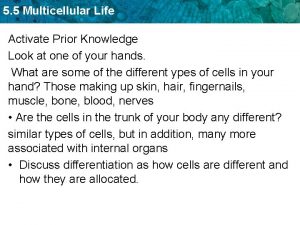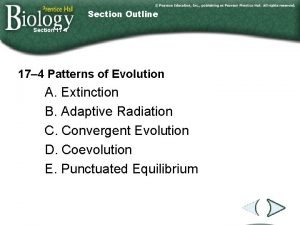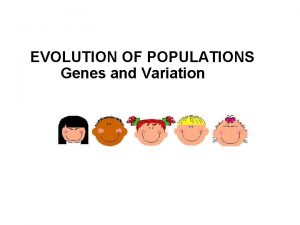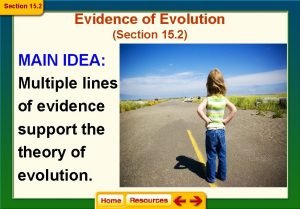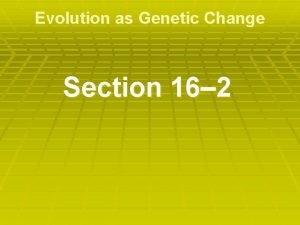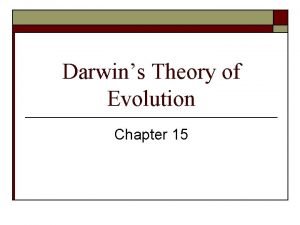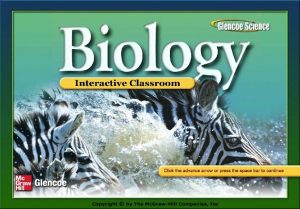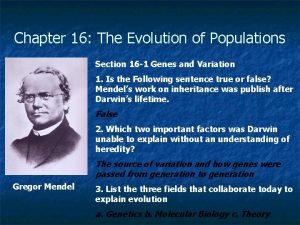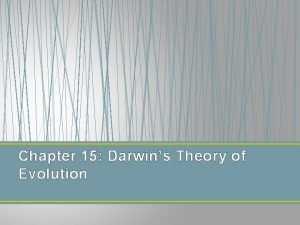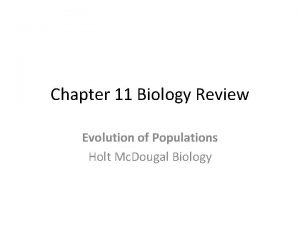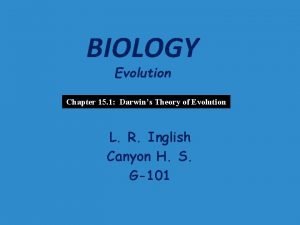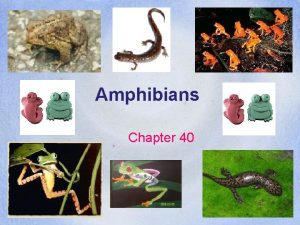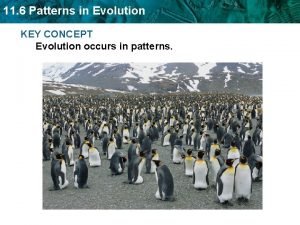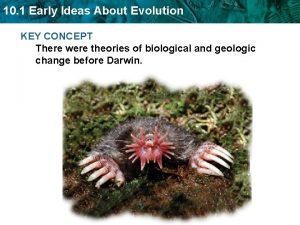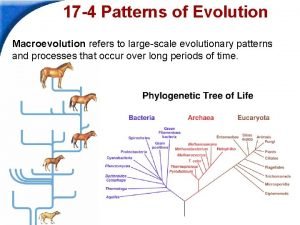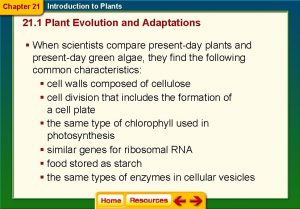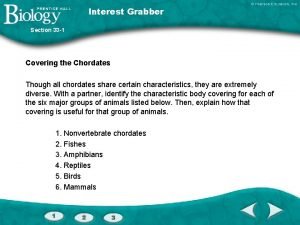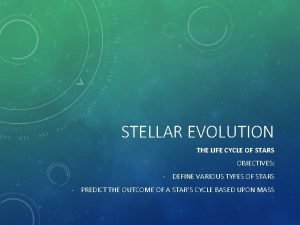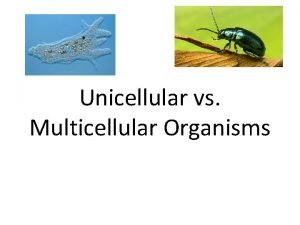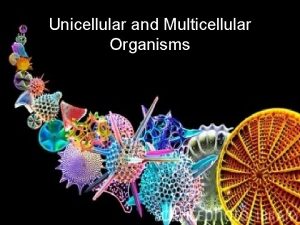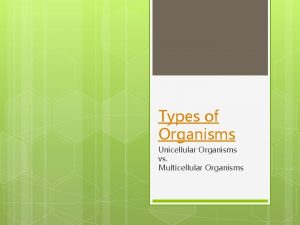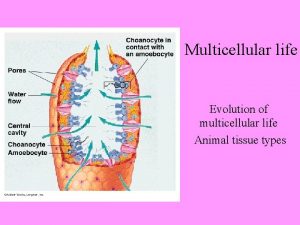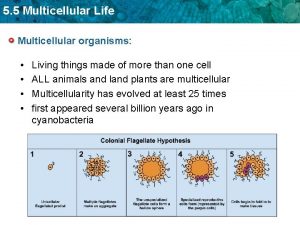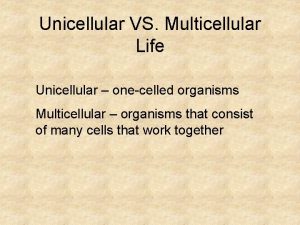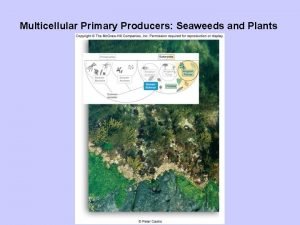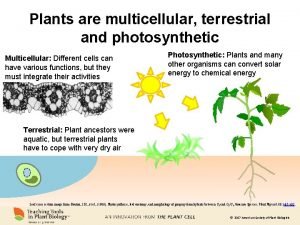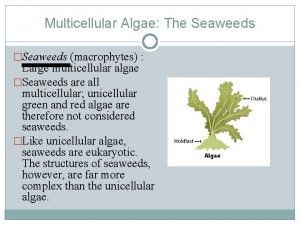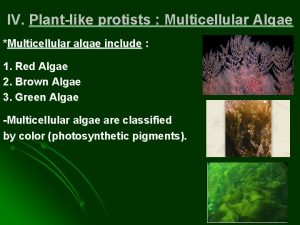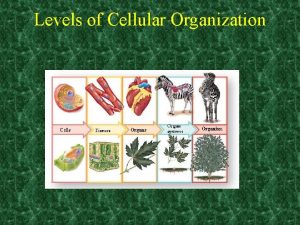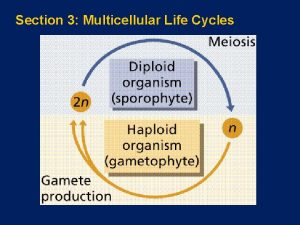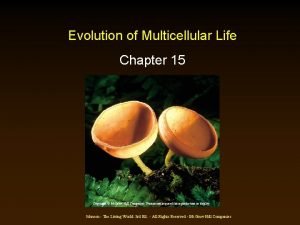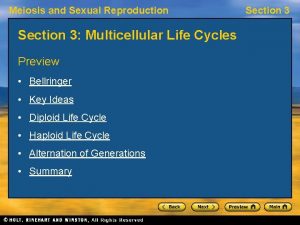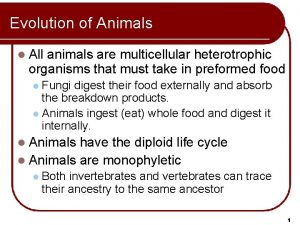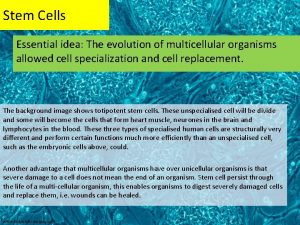Evolution of Multicellular Life Section 17 3 n



























- Slides: 27

Evolution of Multicellular Life Section 17– 3 n This section describes how multicellular life evolved from its earliest forms to its present-day diversity.

Precambrian Time Is the following sentence true or false? Almost 90 percent of Earth’s history occurred during the Precambrian. TRUE

Precambrian Time n n Circle the letter of each sentence that is true about life in the Precambrian. Anaerobic and photosynthetic forms of life appeared.

Precambrian Time Aerobic forms of life evolved, and eukaryotes appeared. Multicellular life forms evolved.

Precambrian Time n Life existed on the land in the sea.

Precambrian Time n Why do few fossils exist from the Precambrian? n The animals were all soft-bodied.

Paleozoic Era n n The first part of the Paleozoic Era is the _____Period. Cambrian Era

Paleozoic Era Is the following sentence true or false? n Life was not very diverse during the Cambrian Period. false n

Paleozoic Era Circle the letter of each sentence that is true about the Cambrian Period. n a. Organisms with hard parts first appeared. n b. Most animal phyla first evolved. n d. Brachiopods and trilobites were common.

Paleozoic Era Match the periods of the Paleozoic Era with the evolutionary events that occurred during them.

Paleozoic Era n Animals first begin to invade the land during the ______Period. n. Devonian

The History of Life Where does the Carboniferous Period get its name? Vast swampy forests, giant ferns and other plants that grew during that time formed thick deposits of sediment that changed into coal over millions of years.

The History of Life n When many types of living things become extinct at the same time, it is called a(an) n mass extinction

The History of Life Is the following sentence true or false? The mass extinction at the end of the Paleozoic affected only land animals. false

Mesozoic Era n Complete the compare-and-contrast table. n PERIODS OF THE MESOZOIC ERA

The History of Life n The Mesozoic Era is called the Age of n REPTILES .

The History of Life n n The first dinosaurs appeared in the___ Period. Triassic

The History of Life n n n Is the following sentence true or false? The mammals of the Triassic Period were very small. true

The History of Life Is the following sentence true or false? Many paleontologists think that birds are close relatives of dinosaurs. n true

The History of Life The dominant vertebrates throughout the Cretaceous Period were ____. reptiles

The History of Life n n What advantage do flowering plants have over conifers? Their seeds are enclosed in a fruit, which protects the seed and aids in dispersing it to new locations.

The History of Life n n Describe the mass extinction that occurred at the end of the Cretaceous Period. More than half of all plant and animals groups were wiped out, including all of the dinosaurs.

Cenozoic Era n n Is the following sentence true or false? During the Cenozoic Era, mammals evolved adaptations that allowed them to live on land, in water, and in the air. true

Cenozoic Era n The Cenozoic Era is called the Age of _______. n Mammals

Cenozoic Era n n What were Earth’s climates like during the Tertiary Period? They were really warm and mild.

Cenozoic Era n n How did Earth’s climate change during the Quaternary Period? First it cooled causing a series of ice ages. Then, it began to warm again.

Cenozoic Era Is the following sentence true or false? The very earliest ancestors of our species appeared about 100, 000 years ago. n FALSE
 17-3 evolution of multicellular life
17-3 evolution of multicellular life Section 17-3 evolution of multicellular life answer key
Section 17-3 evolution of multicellular life answer key Lesson 17: patterns and processes of evolution
Lesson 17: patterns and processes of evolution Evolution of populations section 16-1 genes and variation
Evolution of populations section 16-1 genes and variation Evidence of evolution
Evidence of evolution 16-2 evolution as genetic change
16-2 evolution as genetic change Chapter 15 darwin's theory of evolution
Chapter 15 darwin's theory of evolution Chapter 21 section 1 plant evolution and adaptations
Chapter 21 section 1 plant evolution and adaptations Evolution of populations section 16-1 genes and variation
Evolution of populations section 16-1 genes and variation Chapter 14 section 3 shaping evolutionary theory
Chapter 14 section 3 shaping evolutionary theory Chapter 15 darwin's theory of evolution section 15-1
Chapter 15 darwin's theory of evolution section 15-1 Evolution of populations section 11 review
Evolution of populations section 11 review Homologous structures definition biology
Homologous structures definition biology Amphibians images with names
Amphibians images with names Section 6 patterns in evolution
Section 6 patterns in evolution Identify early ideas about evolution
Identify early ideas about evolution Section 17-4 patterns of evolution answer key
Section 17-4 patterns of evolution answer key Anthocerophytes
Anthocerophytes Section 33-1 chordate evolution answer key
Section 33-1 chordate evolution answer key Section 17-4 patterns of evolution
Section 17-4 patterns of evolution Life expectancy evolution
Life expectancy evolution 1500 life expectancy
1500 life expectancy Flowchart of the life cycle of a star
Flowchart of the life cycle of a star J cole change
J cole change Life mobility evolution
Life mobility evolution Unicellular and multicellular living things
Unicellular and multicellular living things Is algae unicellular or multicellular
Is algae unicellular or multicellular Is a sunflower unicellular or multicellular
Is a sunflower unicellular or multicellular

